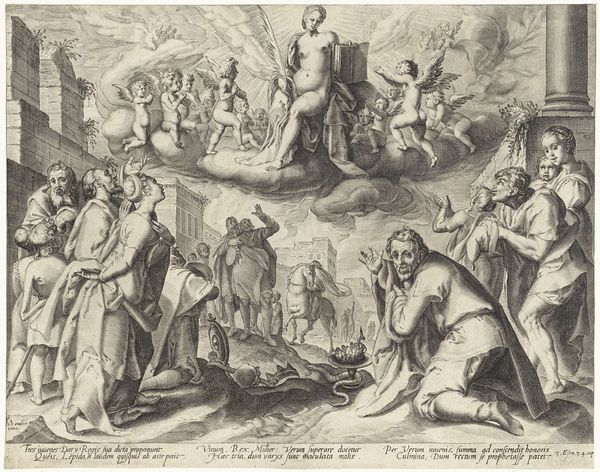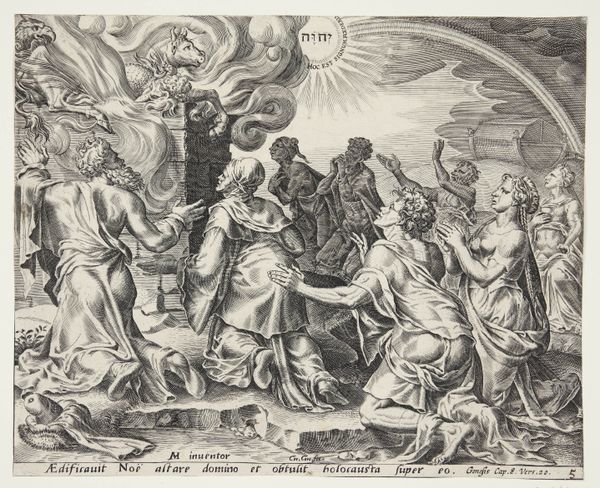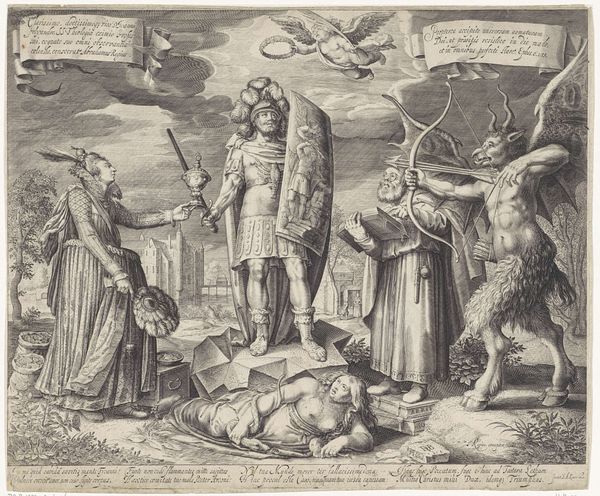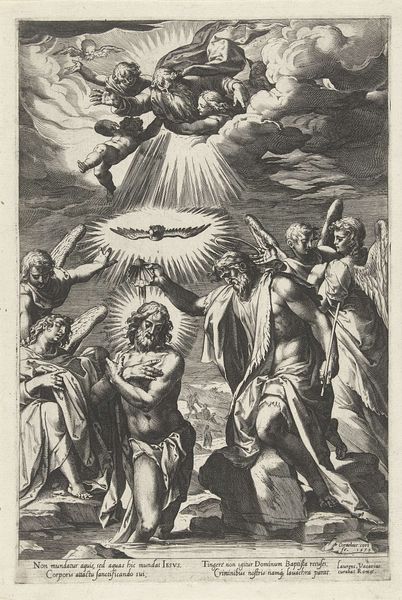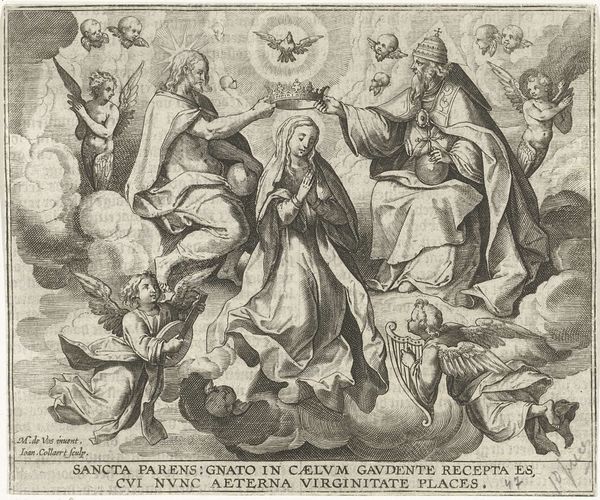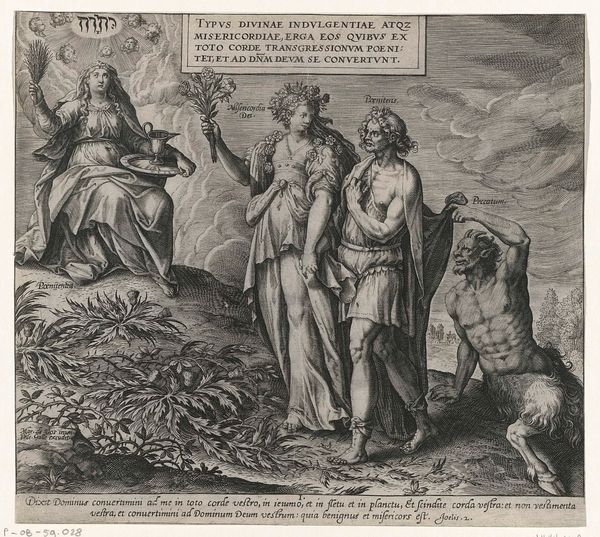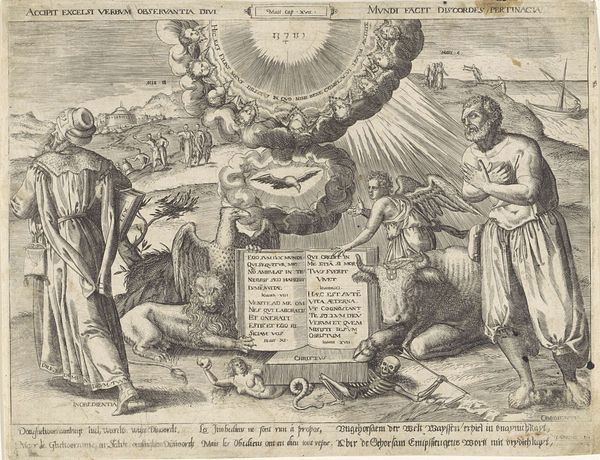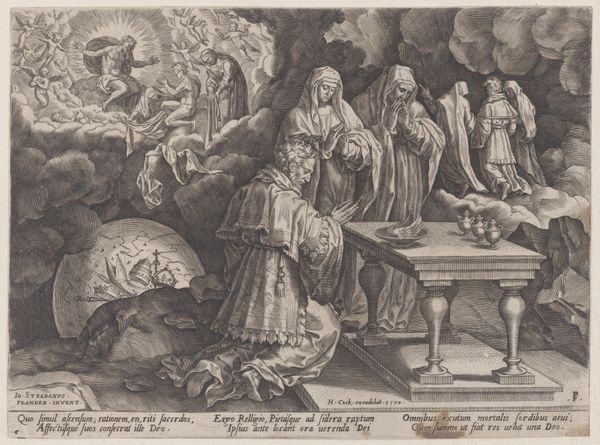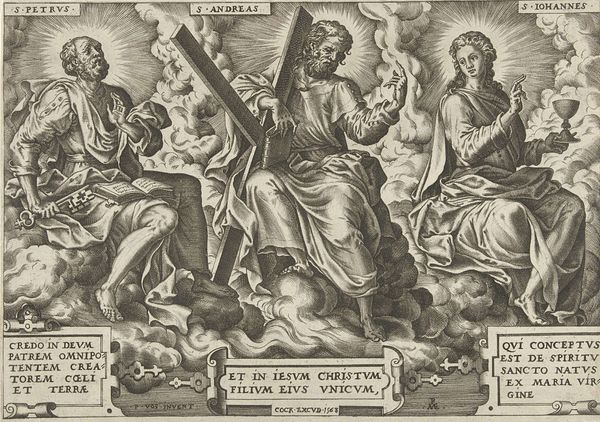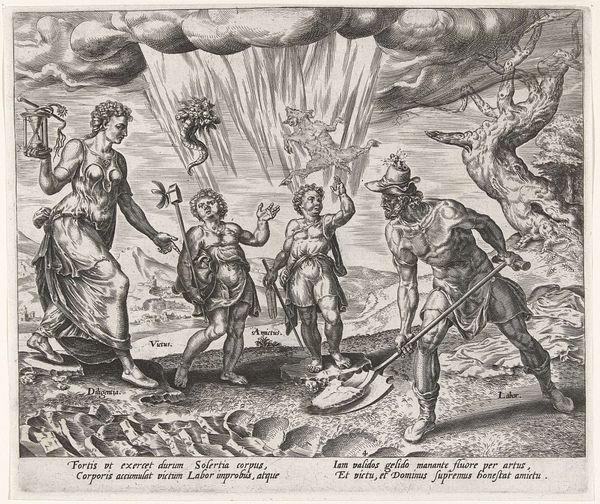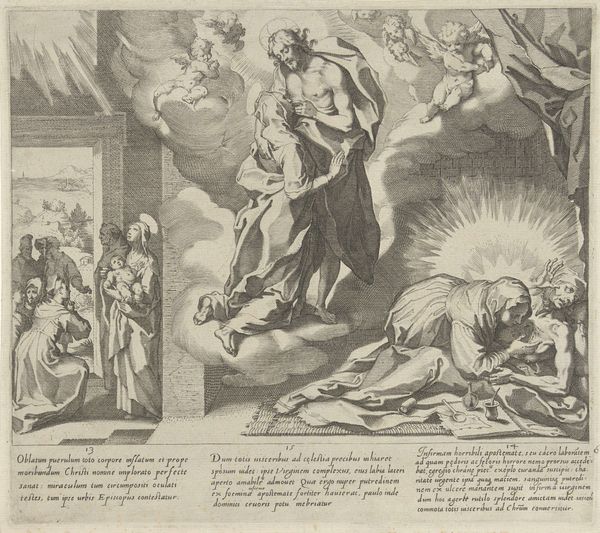
print, engraving
#
allegory
#
baroque
# print
#
old engraving style
#
caricature
#
figuration
#
line
#
history-painting
#
engraving
Dimensions: height 179 mm, width 220 mm
Copyright: Rijks Museum: Open Domain
Curator: This is an engraving titled "Transfiguratie," made sometime between 1598 and 1618. It was conceived by M. de Vos, engraved by Jacques de Bye, and published by Adrian Collaert. Editor: The composition is striking. Christ is illuminated, central, almost weightless amid the cumulus clouds. The earthly figures below are heavy with shadow and awe. Curator: Absolutely. The use of engraving—all those precisely etched lines—creates a sense of drama that reinforces the Baroque aesthetic. There’s a strong diagonal pull upwards toward the divine. But, think about the broader context of the image: engravings like this served a critical role in disseminating religious ideas in the absence of widespread literacy. Editor: Indeed. And those figures, the disciples… see how each reacts? One lies prostrate, overwhelmed, another shields his eyes. There’s such a human response embedded in the figuration itself—that intense drama is palpable. Curator: Yes, these visual narratives were a way to preach visually. And note how Moses and Elijah appear beside Christ, subtly referencing the Old Testament prophecies fulfilled in the New. It's using the print medium for education as much as for veneration. Consider its place in Counter-Reformation imagery; visual language to reassert religious authority. Editor: The artist has done so masterfully through the texture created by those fine lines. And this distribution of light. Notice how Christ and the prophets appear virtually suspended on these almost tangible clouds? The sheer impact of form and tonal gradation renders an almost sculptural presence for each. Curator: Considering its origins as a mass-produced print intended for circulation rather than solitary appreciation allows for a wider understanding of the image. Editor: And still, it is quite engaging; its texture offers such depth through contrast. It is clear the care which was taken with this printing process—allowing a deeper resonance to the whole work.
Comments
No comments
Be the first to comment and join the conversation on the ultimate creative platform.
